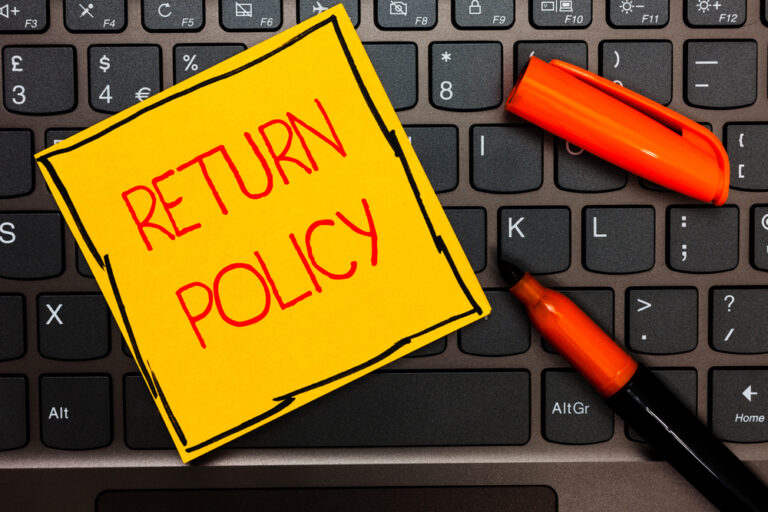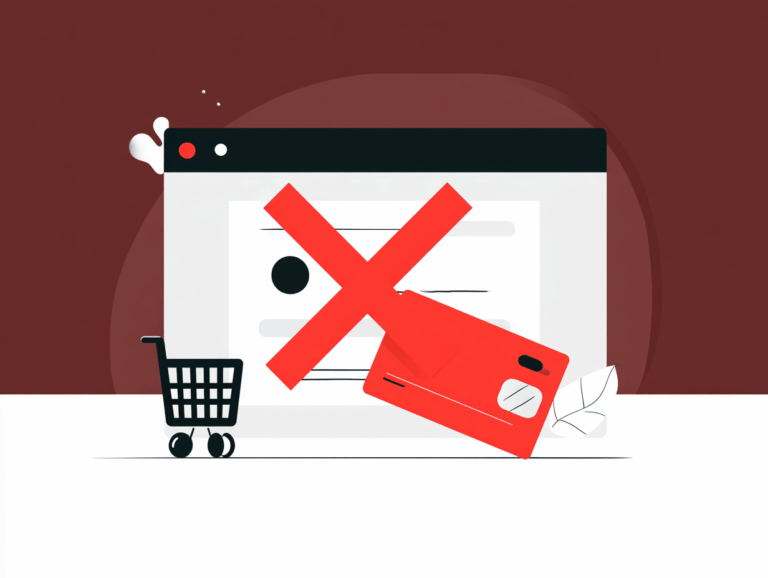Many dealers overlook the complexities and potential pitfalls when offering used car insurance. Missteps in this area can significantly impact your bottom line, leading to lost revenue, increased liability, and damaged customer relationships.
These errors not only eat into your profits but also expose your business to unnecessary risks. From payment processing hiccups to chargeback nightmares, the consequences of poor insurance management can be severe.
This guide will shed light on the most prevalent pitfalls in used car insurance for dealers. We’ll explore how these mistakes can affect your financial health and reputation. More importantly, we’ll arm you with practical strategies to avoid these errors and optimize your insurance operations.
OPEN A USED CAR INSURANCE MERCHANT ACCOUNT
Common Pitfall #1: Inadequate Payment Processing Systems
Your payment processing system can make or break your insurance transactions. Many dealers underestimate the importance of a robust, secure, and efficient payment system, leaving themselves vulnerable to a host of problems.
Risks of Outdated Payment Systems
Outdated payment systems pose significant risks to your dealership. These systems often lack the necessary security features to protect sensitive customer data, making you an easy target for cybercriminals.
Moreover, they can slow down transactions, frustrating customers and potentially leading to lost sales. Older systems may also struggle to handle diverse payment methods, limiting your ability to cater to customer preferences.
Best Practices for Secure and Efficient Payment Processing
To avoid these pitfalls, implement these best practices:
- Upgrade to a modern, cloud-based payment processing system that offers real-time transaction processing and multi-channel capabilities.
- Ensure your system supports various payment methods, including credit cards, debit cards, and digital wallets.
- Implement tokenization and end-to-end encryption to protect customer data throughout the transaction process.
- Regularly update your payment software to patch security vulnerabilities and add new features.
- Train your staff on proper payment handling procedures to minimize human error.
Importance of PCI DSS Compliance
Payment Card Industry Data Security Standard (PCI DSS) compliance is not just a recommendation—it’s a necessity. This set of security standards ensures that all companies that accept, process, store, or transmit credit card information maintain a secure environment.
Failing to comply with PCI DSS can result in hefty fines, increased transaction fees, and even the loss of your ability to process credit card payments. Moreover, a data breach due to non-compliance can severely damage your reputation and customer trust.
To maintain PCI DSS compliance:
- Regularly assess your payment systems for vulnerabilities
- Use and regularly update anti-virus software
- Encrypt transmission of cardholder data across open, public networks
- Restrict access to cardholder data on a need-to-know basis
By prioritizing a robust and secure payment processing system, you’ll not only protect your business and customers but also streamline your operations, potentially boosting sales and customer satisfaction in the process.
CONNECT WITH A PCI-COMPLIANT GATEWAY
Common Pitfall #2: Mismanaging Merchant Accounts
Merchant accounts serve as the financial backbone of your used car insurance transactions. However, many dealers overlook the intricacies of managing these accounts effectively, leading to unnecessary complications and lost opportunities.
The Role of Merchant Accounts in Used Car Insurance Transactions
Your merchant account acts as the crucial link between your customers’ payments and your business bank account. It enables you to accept credit and debit card payments for insurance premiums, facilitating smooth transactions and improving cash flow. A well-managed merchant account can streamline your operations, reduce processing times, and enhance customer satisfaction.
Common Errors in Merchant Account Management
Dealers often fall into several traps when managing their merchant accounts:
- Choosing the wrong type of merchant account: Not all accounts are created equal. Some may not be suitable for high-value or high-volume transactions typical in used car insurance sales.
- Neglecting to negotiate rates: Many dealers accept the first offer they receive, potentially missing out on better rates and terms.
- Failing to monitor account activity: Regular review of transactions and fees is essential to catch discrepancies and potential fraud early.
- Ignoring the fine print: Overlooking account terms and conditions can lead to unexpected fees or account freezes.
- Not maintaining proper documentation: Inadequate record-keeping can complicate dispute resolution and audits.
Tips for Optimizing Merchant Account Usage
To make the most of your merchant account:
- Shop around and compare offers from multiple providers to find the best fit for your dealership’s needs and transaction volume.
- Negotiate your rates and terms. Don’t be afraid to ask for better deals, especially if you have a good sales history.
- Regularly review your merchant account statements. Look for any unusual charges or discrepancies and address them promptly.
- Implement a system for thorough documentation of all transactions. This will prove invaluable in case of disputes or chargebacks.
- Stay informed about industry changes and new regulations that might affect your merchant account operations.
- Consider working with a payment processor that specializes in the automotive industry. They may offer tailored solutions and better understand your unique needs.
- Maintain a healthy account by keeping your chargeback ratio low and adhering to all terms and conditions.
By effectively managing your merchant account, you’ll not only reduce costs and streamline operations but also build a solid foundation for your used car insurance sales. Remember, your merchant account is more than just a financial tool—it’s a key component of your customer service and business efficiency.
OPEN A USED CAR INSURANCE MERCHANT ACCOUNT
Common Pitfall #3: Failing to Prevent and Manage Chargebacks
Chargebacks pose a significant threat to your dealership’s financial health and reputation. Many dealers underestimate the impact of chargebacks on their used car insurance sales, leading to unnecessary losses and operational headaches.
The Impact of Chargebacks on Used Car Insurance Sales
Chargebacks occur when a customer disputes a charge with their bank instead of seeking a refund directly from your dealership. They can have several negative consequences:
- Financial losses: You not only lose the sale amount but also incur additional fees.
- Increased processing costs: High chargeback rates can lead to higher transaction fees from your payment processor.
- Reputation damage: Excessive chargebacks can harm your standing with banks and payment processors.
- Operational disruption: Dealing with chargebacks consumes valuable time and resources.
Strategies to Reduce Chargeback Frequency
Preventing chargebacks should be a priority. Here are some effective strategies:
- Provide clear and detailed descriptions of insurance products and terms.
- Use clear billing descriptors that customers will recognize on their statements.
- Implement robust fraud detection measures to prevent unauthorized transactions.
- Offer excellent customer service to address issues before they escalate to chargebacks.
- Use delivery confirmation for any physical documents related to insurance policies.
- Clearly communicate your refund and cancellation policies.
Best Practices for Handling Chargebacks When They Occur
Despite your best efforts, some chargebacks may still occur. Here’s how to handle them effectively:
- Respond promptly: Adhere to the timeframes set by the card networks for responding to chargeback notices.
- Provide comprehensive evidence: Submit all relevant documentation, including signed contracts, communication logs, and proof of services rendered.
- Maintain detailed records: Keep organized records of all transactions, customer interactions, and policy details.
- Learn from each case: Analyze the reasons behind each chargeback to identify and address any recurring issues.
- Consider chargeback alerts: Some services can notify you of potential chargebacks, allowing you to issue refunds before the formal chargeback process begins.
- Use chargeback management tools: Consider investing in software that can help track and manage chargebacks more efficiently.
By implementing these strategies and best practices, you can significantly reduce the frequency and impact of chargebacks on your used car insurance sales. Remember, proactive prevention and efficient management of chargebacks are key to maintaining a healthy financial position and preserving your reputation in the industry.
Common Pitfall #4: Unclear or Incomplete Terms and Conditions
Many dealers underestimate the critical role that clear and comprehensive Terms and Conditions (T&Cs) play in their used car insurance operations. Vague or incomplete T&Cs can lead to misunderstandings, disputes, and potential legal issues.
The Importance of Comprehensive T&Cs in Used Car Insurance
Well-crafted T&Cs serve multiple purposes:
- They set clear expectations for both you and your customers.
- They protect your dealership from potential legal disputes.
- They help prevent misunderstandings that could lead to chargebacks.
- They demonstrate professionalism and build trust with your customers.
Key Elements to Include in Your Terms and Conditions
To ensure your T&Cs are thorough and effective, include these essential elements:
- Coverage details: Clearly outline what is and isn’t covered under the insurance policy.
- Premium payment terms: Specify payment schedules, accepted methods, and consequences of non-payment.
- Cancellation and refund policies: Detail the process for policy cancellation and any applicable refunds.
- Claims process: Explain how customers can file claims and what documentation is required.
- Dispute resolution procedures: Outline the steps for resolving disagreements.
- Privacy policy: Describe how you handle and protect customer information.
- Limitations of liability: Clearly state any limits on your dealership’s liability.
- Applicable laws and jurisdiction: Specify which laws govern the agreement and where disputes will be resolved.
Best Practices for Creating and Maintaining T&Cs
To ensure your T&Cs are effective:
- Use clear, simple language: Avoid jargon and complex legal terms that may confuse customers.
- Make them easily accessible: Ensure your T&Cs are readily available on your website and in all relevant documentation.
- Regularly review and update: Keep your T&Cs current with changing laws and business practices.
- Seek legal counsel: Have a lawyer specializing in automotive or insurance law review your T&Cs.
- Highlight key points: Draw attention to crucial terms, perhaps using bold text or requiring separate initials.
- Obtain clear consent: Ensure customers acknowledge they’ve read and agreed to the T&Cs.
By investing time and effort into creating clear and comprehensive Terms and Conditions, you’ll not only protect your dealership but also build trust with your customers. Remember, transparency in your T&Cs can lead to smoother transactions and fewer disputes in your used car insurance sales.
AUDIT YOUR SITE AND IMPROVE YOUR MERCHANT STANDING
Common Pitfall #5: Neglecting to Update Insurance Offerings
Staying static is a recipe for falling behind. Many dealers make the mistake of sticking with outdated insurance products, missing out on opportunities to better serve their customers and increase revenue.
The Risks of Outdated Insurance Products
Failing to update your insurance offerings can lead to several problems:
- Decreased competitiveness: Outdated products may not match what competitors are offering, putting you at a disadvantage.
- Missed revenue opportunities: New insurance products often come with higher margins or appeal to broader customer segments.
- Increased liability: Older policies may not cover emerging risks, potentially exposing your dealership to legal issues.
- Customer dissatisfaction: Modern customers expect up-to-date, comprehensive coverage options.
Importance of Staying Current with Market Trends and Customer Needs
The insurance market is constantly evolving, driven by factors such as:
- Technological advancements in vehicles (e.g., autonomous features, electric powertrains)
- Changing consumer preferences (e.g., usage-based insurance, all-in-one policies)
- Emerging risks (e.g., cybersecurity threats for connected cars)
- Regulatory changes affecting insurance requirements
- Staying abreast of these trends allows you to:
- Offer relevant and attractive insurance products
- Adapt to changing customer expectations
- Maintain a competitive edge in the market
- Potentially increase your profit margins
Best Practices for Regularly Reviewing and Updating Insurance Offerings
To ensure your insurance products remain current and competitive:
- Conduct regular market research: Stay informed about new insurance products and trends in the automotive industry.
- Analyze customer feedback: Pay attention to what your customers are asking for and any gaps in your current offerings.
- Review sales data: Identify which insurance products are selling well and which aren’t, adjusting your offerings accordingly.
- Maintain open communication with insurance providers: Regular discussions can help you stay informed about new products and industry changes.
- Attend industry conferences and workshops: These events can provide valuable insights into emerging trends and best practices.
- Consider partnering with insurtech companies: They often offer innovative products that can differentiate your dealership.
- Implement a formal review process: Schedule regular (e.g., quarterly or bi-annual) reviews of your insurance portfolio.
- Update your marketing materials: Make sure your website, brochures, and other materials reflect your current insurance offerings.
- Seek customer feedback on potential new products: Consider piloting new insurance offerings with a select group of customers to gauge interest.
By regularly updating your insurance offerings, you demonstrate to your customers that you’re committed to providing the best possible coverage for their needs. This not only helps in retaining existing customers but also in attracting new ones who are looking for modern, comprehensive insurance solutions for their used car purchases.









